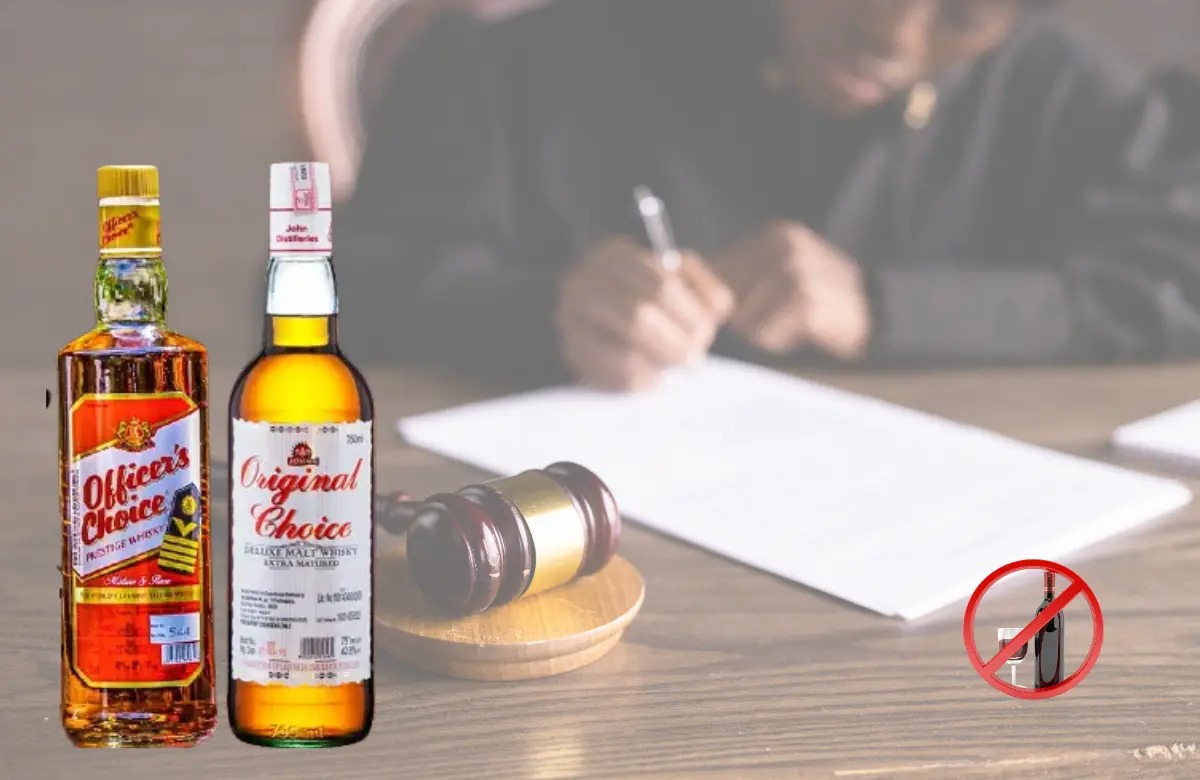V. S. Deshpande, J.@mdashFrom all this, it can be safely concluded that, (1) the appellant was directed to put an end to the life of Nago, who was in turn to accompany him on the loaded tractor from Rohana to Karanja (2) on his pleading inability to do it alone, he was assured of the assistance of others; (3) he and the deceased left together in the tractor with other four co-employees and one Kondabai, who also wanted lift upto Karanja ; (4) the deceased was Assaulted to death by himself and four others by sticks and stones in S. No. 25 near Bheda tree; (5) Kondabai was also done to death to prevent disclosure and (6) the two dead bodies were dropped on Manora-Mangrulpir road near Sakhardoh on his way to Mangrulpir and Karanja.
2. Murder, at any rate of Nago is thus proved to be the outcome of previous concert between six persons and conjoint action of five persons Including the appellant, in pursuance of their common intention. This evidence does not permit fixation of any individual liability for any particular blow or injury. The appellant is proved to have given stone blow to Nago. But it is not possible to hold him liable for any of the three fatal or four simple injuries. He can, however, be held vicariously liable for the conjoint attack u/s 302 read with section 34 Indian Penal Code.
3. Confessional statement no doubt mentions the names of the instigator and the other four collaborators. Conviction of the appellant undoubtedly is being based on our finding that the confession is true and voluntary. Even so, there is no other sufficient legal evidence against the other co-accused and this necessitated their acquittal. This inevitably introduces an element of inconsistency, if not of uncertainty, appellant being convicted on the hypothesis that the persons named did instigate and collaborate and yet acquitting the very same persons on such instigation and collaboration having remained legally unproved. Such apparent inconsistency, however, is never considered to be legal impediment in the way of the conviction of the maker of the confession in all cases depending essentially on confessions. Such inconsistency on the other hand is judicially accepted as an indispensable procedural safeguard under the rules of evidence. Convicted accused is always deemed to have conjointly acted with legally unidentified persons, notwithstanding the acquittal of the named other accused for want of additional legal evidence.
4. Mr. Manohar contends that with the acquittal of all but the appellant, his conviction for the offence u/s 302 read with section 34 Indian Penal Code is not legal, as the appellant cannot be said to have shared the common intention with any one else to warrant his vicarious liability. Reliance is placed on the decisions of
5. Now it is true that the conviction of any person or persons u/s 302 read with section 34 Indian Penal Code assumes that perpetrators of the crime were more than one, and all of them acted (1) conjointly (2) after some prior concert (3) and in execution of their common intention. With the acquittal of all but one such alleged perpetrators, possibility of any conjoint action in pursuance of any prior concert and common intention is liable to be eliminated. The person sought to be convicted cannot be said to have shared the common intention, or acted in concert, with anyone, and cannot conceivably be held vicariously liable for the fatal blow by any supposed perpetrator. In all such contingencies one such person can be held liable only for his individual act or omission, if the same is capable of being determined or else he also is liable to be acquitted notwithstanding the proof of his unspecified participation. Conviction in such a case introduces inconsistency in as much the conviction assumes his participation and sharing of common intention with those whose very acquittal prima facie indicates their non-participation. Prabhu Dayal''s case (supra) is an instance in point.
6. Cases, however, do arise where notwithstanding the acquittal of all but one, offence can be firmly held to have been committed by more than one person, though other alleged participants are required to be acquitted either due to their false implication or doubtful evidence or inadequate or total absence of any evidence against them. It has been held in
7. In Krishna Patil''s case, strongly relied on by Mr. Manohar, all the charge-sheeted four accused were acquitted for offence u/s 302 read with section 34 by the trial Court. Accused Nos. 1, 3 and 4 had pleaded alibi, Accused No. 2 Krishna had admitted having assaulted the deceased, but pleaded self defence. The High Court confirmed the acquittal of accused Nos. 1, 3 and 4 though it was inclined to accept the prosecution evidence partly. In spite of their such acquittal, Krishna Patil alone was convicted for offence u/s 302 read with section 34 Indian Penal Code. On the findings of the High Court as quoted and interpreted by the Supreme Court in para. 4 at page 1415, this case can be said to be class by itself. Positive finding of Krishna having shared the common intention with ''one or the other'' acquitted accused, according to the Supreme Court, introduced an inconsistency, holding such other accused having participated and also in the same breath not so participated in the crime. Secondly, (1) finding that some of the other accused were ''undoubtedly'' there and yet finding it unsafe to hold them guilty as also that (2) accused No. 2 committed the offence with ''one or more of the accused'' betrayed vacillation and uncertainty within the ratio of
8. Superficial reading of a few observations in paras. 5 and 6 of the judgment does create an impression as though ratio of B. M. Dana''s case was intended to be overruled. But the learned Judges in terms approvingly referred to Mohansingh''s case (supra) in para 7 of the judgment and distinguished the facts of the case before them. Mr. Manohar''s reliance on such observations in Krishna PatiVs case therefore can be of no avail to him. Other three cases merely refer or follow Krishna PatU''s case. Prabhu Dayal''s case has been distinguished in B. M. Dana''s case.
9. If deceptive appearances of similarity in facts are eliminated, this Krishna''s case is clearly distinguishable on our findings. Crime is the result of conjoint action of the appellant and four other unidentified persons. There was prior concert between them and common intention was shared by them all at the instance of the instigator. There is no element of uncertainty as to the fact of participation by such others and their having remained unidentified. Their having remained unidentified by itself cannot introduce either any infirmity or inconsistency, as our finding as to the participation by such other persons is firm. To say that the appellant acted in concert with unidentified participants is not the same thing as saying positively that he so participated with the acquitted accused. The distinction, though subtle, is real and transparent and of some substance. There is nothing in Krishna Patil''s case to indicate that recognition of such a distinction, required to be relied on in all cases depending on confessional statements, is legally fatal.
10. Invariably in such cases, convicted accused is held to have acted in concert with persons other than the acquitted accused. This necessitates positive assumption that each one of such acquitted person was innocent and could not have been amongst the unidentified perpetrators of crime. But any such finding positively excluding the acquitted accused from the Preview of the ''unidentified'', in the facts of this case, would be illogical and inconsistent with our appreciation of the confessional statement. Such positive exclusion would as much lead to the ''legally impossible position'' as the positive implication of the acquitted accused adverted to in Krishna Patil''s case, unless of course evidence were to permit a clear finding of their false implication. Criminal trial is essentially aimed at proving the guilt and not at proving the innocence or, at, any roving enquiry into the conduct of the accused to necessitate any such finding of false implication in every case. Acquittal of the accused ordinarily implies absence of proof of his guilt and revives the presumption of innocence and not the positive proof of his innocence, under the scheme of our laws. Acquittal of the other accused in the present case does not amount to the proof of their such innocence as to warrant their positive exclusion from the ''unidentified'' persons, with whom appellant is held by us to have acted in concert.
11. Discussion at the end of para. 12 at page 293 of B. M. Dana''s case indicates that Supreme Court had left such a question open. We have already indicated how such a finding was found to be a ''must'' in Krishna Patil''s case due to High Court''s peculiar finding quoted in para. 4 of the judgment. It is true that acquittal of the accused in this case also is attributed by the Supreme Court in paras. 6 and 8 to ''benefit of doubt'' giving an impression, on superficial reading, as though every such acquitted accused must be excluded from the ''unidentified'' persons. The words ''benefit of doubt'', however, do not admit of any fixed connotation and convey acquittal under variety of circumstances. Krishna Patil''s case cannot be said to have laid down any such rule of law. This decision really turns on its own facts as explained by the Supreme Court itself in a recent case of
12. Reliance was placed by Mr. Manohar on the following passage at page 479 from the case of Sambasivam v. Public Prosecutor, Federation of Malaya 1950 A C 458 in support of his argument of exclusion:
"The effect of a verdict of acquittal ... is not completely stated by saying that the persons acquitted cannot be tried again for the same offence. To that it must be added that the verdict, is binding and conclusive in all subsequent proceedings between the parties to the adjudication."
This passage has been quoted with approval by the Supreme Court in
13. We are thus unable to accede to the contentions either that the acquittal of all but the appellant must result in his acquittal also or that he cannot be convicted unless he can be held to have acted in concert with persons other than the acquitted accused and that the acquitted accused must be excluded from such unidentified. We are unable to see any rational basis, logic reason or justice in acquitting the appellant in spite of his confession of having committed the murder conjointly with four others and when the confession is found by us to be dependable against him. Such an approach is not supported by either of the cases, cited including Krishna Patil''s case. The protection of the innocent must always be the concern of any Court which must start with initial presumption of innocence of the accused. But suggested approach is more pedantic and doctrinaire ,than realistic and is liable to result in miscarriage of justice in cases of dacoity, rioting or cases based on confessional statements, where acquittal of some becomes inevitable in Deference''s to procedural safeguards, without falsifying the evidence pointing at his or their guilt.
14. Vicarious liability of a convicted person u/s 34, thus does not so much depend on conviction or identification of other participants as on the firm finding that offence was committed conjointly by more than one person. Neither acquittal of others nor inability to determine their false implication or exclusion thereof from unidentified others is sufficient to displace conviction of such person.
(The rest of the judgment is not material to this Report.)

